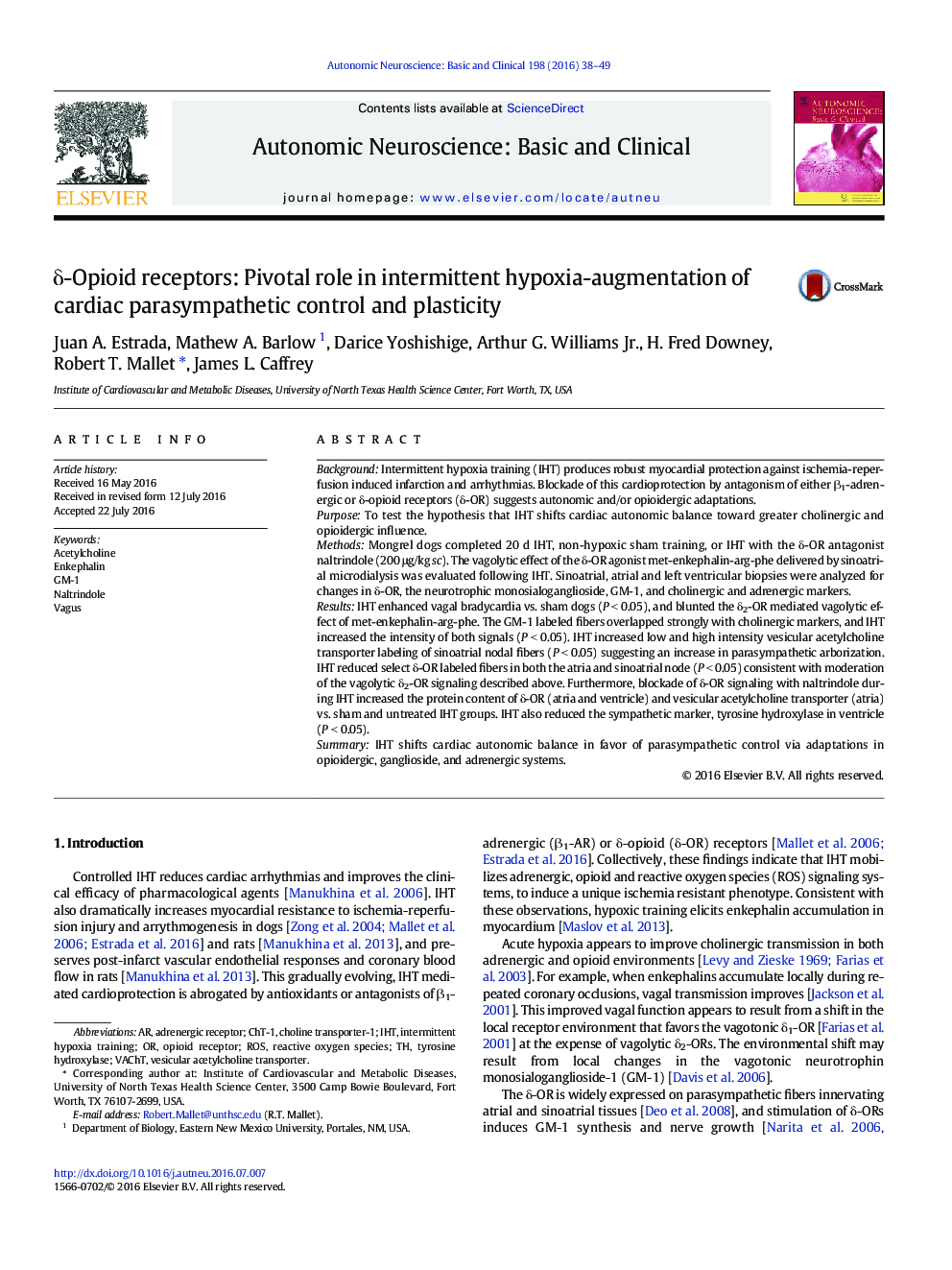| کد مقاله | کد نشریه | سال انتشار | مقاله انگلیسی | نسخه تمام متن |
|---|---|---|---|---|
| 3034441 | 1579517 | 2016 | 12 صفحه PDF | دانلود رایگان |
• IHT induced cardioprotection is associated with an improved autonomic profile.
• IHT augments vagally mediated bradycardia.
• Vagotonic δ1-OR activity is enhanced by IHT at the expense of competing vagolytic δ2-OR activity.
• IHT induces parasympathetic nerve growth in myocardium.
• Adrenergic influence over the heart is attenuated by IHT.
BackgroundIntermittent hypoxia training (IHT) produces robust myocardial protection against ischemia-reperfusion induced infarction and arrhythmias. Blockade of this cardioprotection by antagonism of either β1-adrenergic or δ-opioid receptors (δ-OR) suggests autonomic and/or opioidergic adaptations.PurposeTo test the hypothesis that IHT shifts cardiac autonomic balance toward greater cholinergic and opioidergic influence.MethodsMongrel dogs completed 20 d IHT, non-hypoxic sham training, or IHT with the δ-OR antagonist naltrindole (200 μg/kg sc). The vagolytic effect of the δ-OR agonist met-enkephalin-arg-phe delivered by sinoatrial microdialysis was evaluated following IHT. Sinoatrial, atrial and left ventricular biopsies were analyzed for changes in δ-OR, the neurotrophic monosialoganglioside, GM-1, and cholinergic and adrenergic markers.ResultsIHT enhanced vagal bradycardia vs. sham dogs (P < 0.05), and blunted the δ2-OR mediated vagolytic effect of met-enkephalin-arg-phe. The GM-1 labeled fibers overlapped strongly with cholinergic markers, and IHT increased the intensity of both signals (P < 0.05). IHT increased low and high intensity vesicular acetylcholine transporter labeling of sinoatrial nodal fibers (P < 0.05) suggesting an increase in parasympathetic arborization. IHT reduced select δ-OR labeled fibers in both the atria and sinoatrial node (P < 0.05) consistent with moderation of the vagolytic δ2-OR signaling described above. Furthermore, blockade of δ-OR signaling with naltrindole during IHT increased the protein content of δ-OR (atria and ventricle) and vesicular acetylcholine transporter (atria) vs. sham and untreated IHT groups. IHT also reduced the sympathetic marker, tyrosine hydroxylase in ventricle (P < 0.05).SummaryIHT shifts cardiac autonomic balance in favor of parasympathetic control via adaptations in opioidergic, ganglioside, and adrenergic systems.
Journal: Autonomic Neuroscience - Volume 198, July 2016, Pages 38–49
